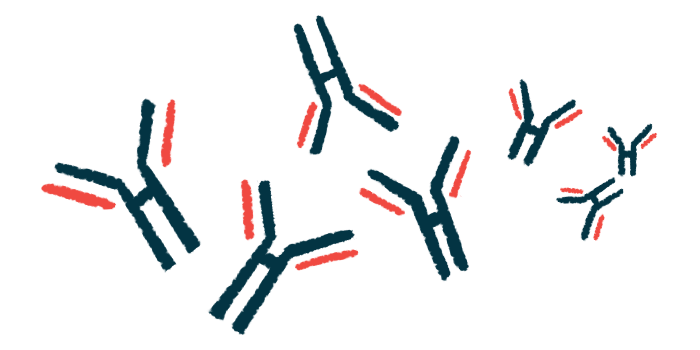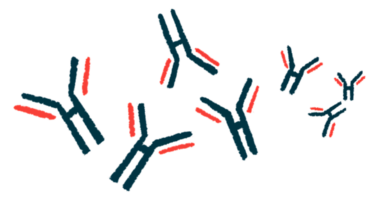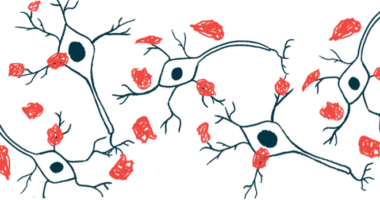Parkinson’s vaccine, UB-312, slows alpha-synuclein clumping in patients
Findings from second part of Phase 1 trial in group of treated patients

UB-312, an experimental vaccine being developed for Parkinson’s disease by Vaxxinity, induced the production of antibodies targeting alpha-synuclein and slowed protein clumping in patients’ cerebrospinal fluid (CSF), the fluid that surrounds the brain and the spinal cord.
The vaccine is designed to stimulate a patient’s immune system to produce antibodies against toxic forms of alpha-synuclein, stopping its clumping, or aggregation. It is being evaluated for safety and its ability to trigger antibodies as intended in a Phase 1 clinical trial.
“This quarter, we have demonstrated … our first proof of mechanism in our UB-312 program for Parkinson’s,” Mei Mei Hu, Vaxxinity’s CEO, said in a company press release.
Parkinson’s vaccine targeting alpha-synuclein aggregation
Parkinson’s disease is caused by the progressive dysfunction and death of dopaminergic neurons, nerve cells that produce the neurotransmitter dopamine, mainly in a part of the brain called the substantia nigra.
The reasons why these neurons die in Parkinson’s are not fully understood, but the formation of alpha-synuclein protein clumps is thought to play an important role. These clumps are toxic to brain cells, and clumps in one cell can trigger alpha-synuclein clump formation in neighboring cells.
UB-312 contains a synthetic piece of the alpha-synuclein protein, together with immune-stimulating molecules that aim to induce the production of antibodies targeting the protein.
The two-part Phase 1 clinical trial (NCT04075318) first enrolled 50 healthy adults, ages 40 to 85, at its single site in the Netherlands. They randomly were assigned to three injections of UB-312 at doses ranging from 40 to 2,000 micrograms, or a placebo, and monitored for almost one year.
Results here generally showed that UB-312 was well tolerated at three doses of up to 300 micrograms. Most side effects possibly or probably related to the medication were headaches and injection site reactions, like pain and tenderness, that resolved with time. Higher dosing was stopped after a patient developed serious flu-like symptoms.
Most potent antibody response seen in patients treated at higher UB-312 dose
Antibodies against the alpha-synuclein protein were detectable in adults given the UB-312 vaccine at doses of 100 to 300 micrograms starting at trial week nine and remaining out to 45 weeks. Six patients given three, 300 microgram doses had the most potent responses, with antibodies detected in the CSF.
The trial’s second part tested 100 or 300 microgram doses in people with early or mild-to-moderate Parkinson’s disease.
According to the company, UB-312 successfully broke immune tolerance — the body’s ability to recognize its cells and tissues, preventing the immune system from attacking them — in 12 of the 13 patients who completed dosing.
UB-312 also slowed alpha-synuclein aggregation in patients’ CSF, indicating that antibodies against the toxic protein can cross the blood-brain barrier — the selective and protective layer preventing certain substances in the blood from reaching the brain — and, once there, bind to its target.
Compared with a placebo, UB-312 also reduced alpha-synuclein aggregation in Parkinson’s patients over time, the company announced.
“We have observed clear target engagement with aggregated alpha-synuclein in patient CSF, indicating that UB-312-induced antibodies cross the blood-brain barrier and engage the toxic pathology of Parkinson’s disease,” Hu said.
Vaxxinity noted that scientists are continuing to review data from the trial, which was reported to conclude in March.
Study data result from a two-year collaboration funded by The Michael J. Fox Foundation for Parkinson’s Research.
UB-312 also may treat other brain diseases characterized by alpha-synuclein aggregation, like Lewy body dementia and multiple system atrophy, the company noted.







